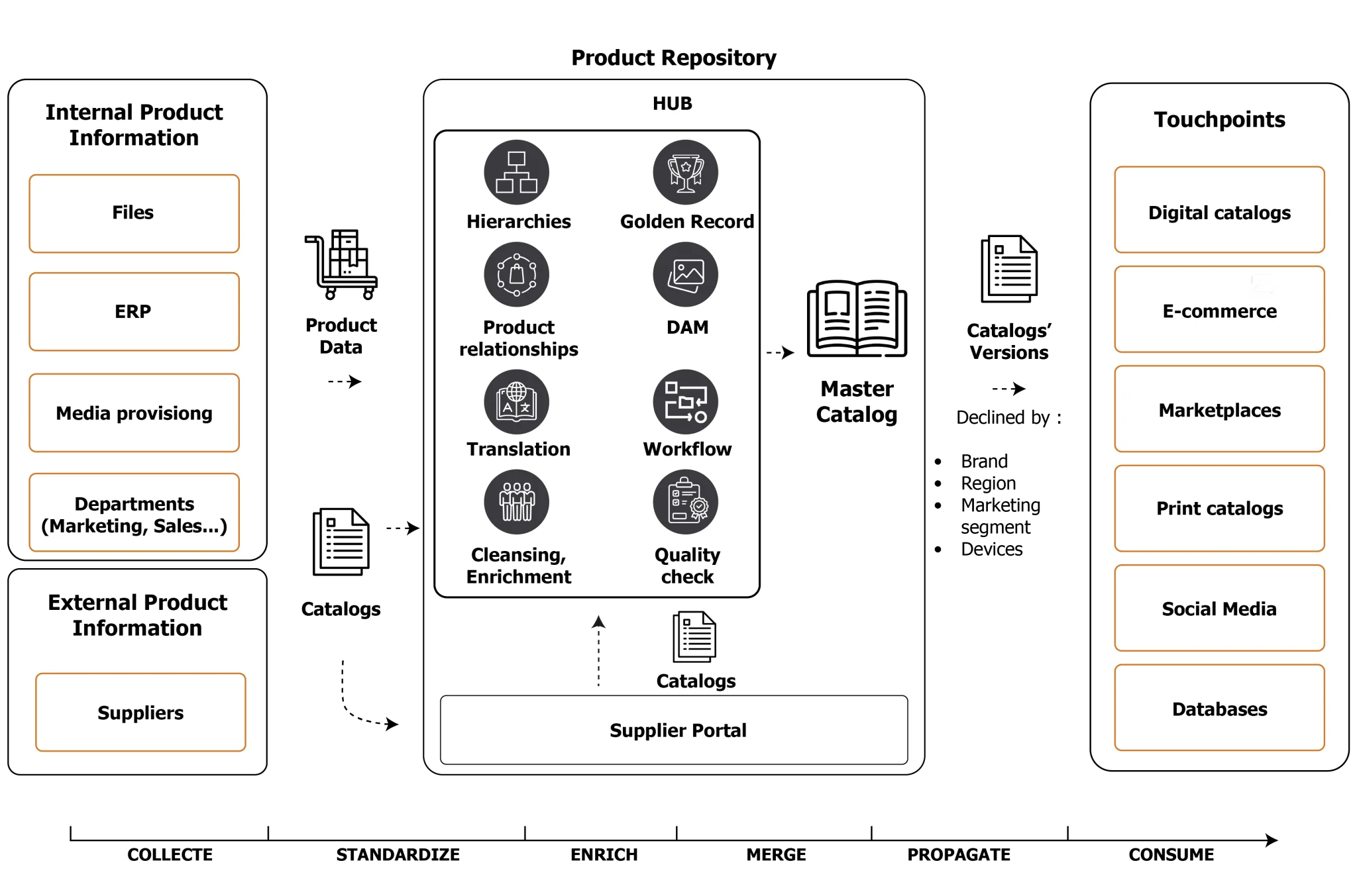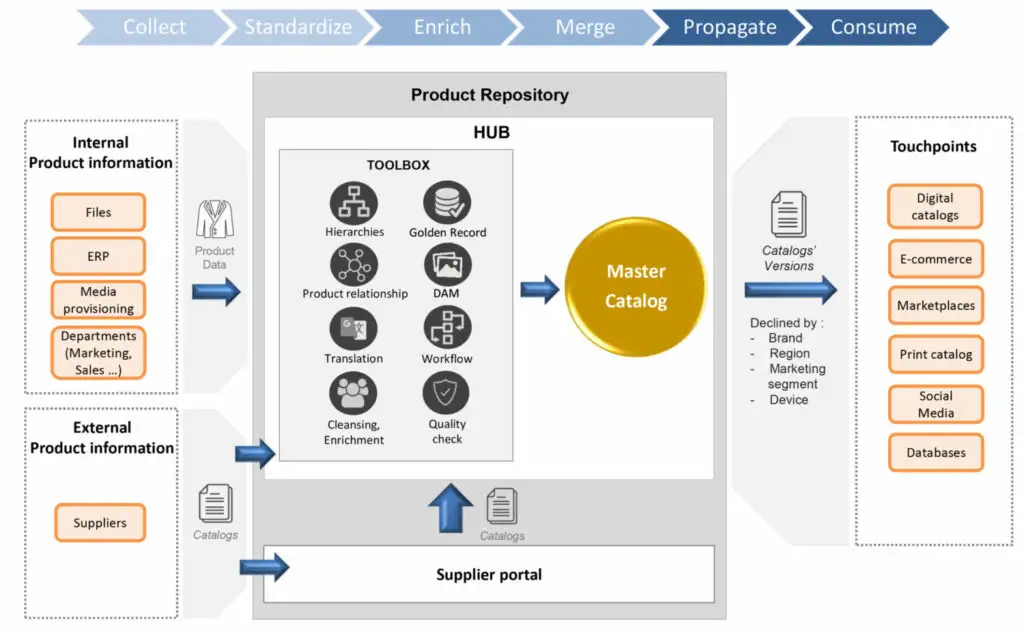BUILD YOUR PRODUCT INFORMATION MANAGEMENT

Product MDM and Product Information Management?
PIM is a solution that covers the entire lifecycle of product data, from product acquisition and the implementation of a corporate catalog to sharing that catalog.
A holistic and personalized view of your data.
Data connected to all your sources and available everywhere.
Reliable data: Quality, traceability, security, compliance.
The implementation of a dedicated product catalog solution has become essential for various reasons:
- Product data does not only belong to e-commerce sites, and the distribution channels are increasingly numerous: marketplaces, etc., not to mention support for in-store sales.
- Coding, advanced classification functions, data quality management, as well as the addition of images and marketing recommendations must be orchestrated within a collaborative solution. This optimizes the Time to Market for products and ensures that the published data is not only reliable but also helps attract customers.
In terms of benefits for the company, PIM offers more touchpoints and a more personalized relationship, thereby contributing to increased conversion rates, improved customer satisfaction, and staying ahead of the competition.
The implementation of a dedicated product catalog solution has become essential for various reasons:
- Product data does not only belong to e-commerce sites, and the distribution channels are increasingly numerous: marketplaces, etc., not to mention support for in-store sales.
- Coding, advanced classification functions, data quality management, as well as the addition of images and marketing recommendations must be orchestrated within a collaborative solution. This optimizes the Time to Market for products and ensures that the published data is not only reliable but also helps attract customers.
In terms of benefits for the company, PIM offers more touchpoints and a more personalized relationship, thereby contributing to increased conversion rates, improved customer satisfaction, and staying ahead of the competition.
Product Repository and PIM
PIM has, in a way, transcended the simple notion of a product repository to become a true business application. It leverages the strengths of repositories: modeling, hierarchies, collaborative work, catalog versioning, import and export in various formats, while offering more specific functionalities:
- Product versions and variants: track and manage different versions and variants of products, including changes in specifications and variations by market.
- Collaboration between teams: collaborate among marketing, R&D, and engineering teams to enrich product data.
- Complex technical data: integrate detailed technical information (manufacturing specifications, user manuals, etc.) to provide direct access to marketing and sales teams.
- Regulatory compliance and management of sensitive data: manage, trace, and approve sensitive data such as compliance certifications and hazardous materials.
- Product lifecycle: track key stages of a product's lifecycle, such as its launch and withdrawal from the market, while updating and disseminating relevant information.
- Media management: enrich product data with associated media (images, videos, sounds, documents, etc.) for consistent media management throughout the product's lifecycle.
- Ingestion: upstream, the catalog is built from data from suppliers and/or data from products manufactured internally.
- Publication: downstream, it is deployed across various sales channels, both internal and external: paper and digital catalogs, e-commerce sites, marketplaces, in-store tablets, etc.
PMDM : Product Master Data Management
If your business primarily involves selling the products you manufacture, we will refer to PMDM:
It ensures a significant reduction in the time dedicated to generating your product catalog while maintaining the quality of the associated data:
- Integrate coding data from your ERP or PLM, and detect any potential quality issues (completeness, formats, duplicates, etc.).
- Activate your contributing services collaboratively through integrated workflows: each person acts directly on the data for which they are responsible, using functionalities specific to their role, whether in marketing, translation, or visual management within an integrated DAM.
- Manage metadata and the control and validation steps to approve what can be published.
Product Information Management
If your business focuses on distributing products through all possible channels, you will need a PIM:
- Integrate your suppliers by allowing them to upload their own product catalogs to your supplier portal while applying automatic control rules (completeness, formats, etc.). Some modules even allow suppliers to manage the transformation of their model to yours themselves.
- Natively import data exchange formats (Etim, Fab-dis, etc.) and consolidate your catalog according to a structured process that includes controls, enrichments, deduplication, and validations.
- Easily create multiple catalog variants (by brand, region, marketing target, system, season, etc.) and automatically distribute them across your sales channels: website, marketplaces, social networks, etc. Some syndication modules allow you to adapt your catalog to the format of your marketplaces (Amazon, etc.) and other channels.




